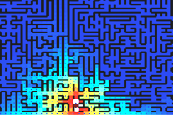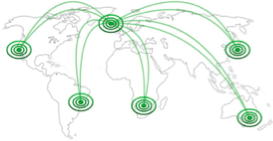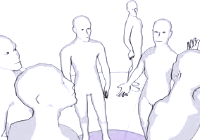Threadneedle is a simulation framework developed to explore the behavior of the banking system. We are aiming to reproduce the behavior of banking systems using the Basel 2 and 3 Regulatory frameworks, as well as local Icelandic regulations, as exactly as possible.
The framework uses full double-entry bookkeeping for all transactions performed within the banking system, which we have documented in the paper Description of the Operational Mechanics of a Basel Regulated Banking System for validation and checking.
 Threadneedle Street, London. Famous for being the site of the Bank of England.
Threadneedle Street, London. Famous for being the site of the Bank of England.Over the last fifty years, computer science has developed a great deal of experience in analyzing and troubleshooting distributed systems like the banking system. Viewed as a distributed system, the monetary system is an example of a relatively unusual (for computer science) closed network, where the operation of the system depends on packets of information (money) continuously circulating in the economy, and being used to determine the price signal for the economy.
By treating the banking system as a distributed system, and applying the same analytical techniques that we use when designing and engineering larger scale critical real-time systems such as the Internet, we hope to cast light on some of its ‘features’ such as the periodic credit crises that have afflicted western economies in the three hundred years since the effective introduction of modern banking.







